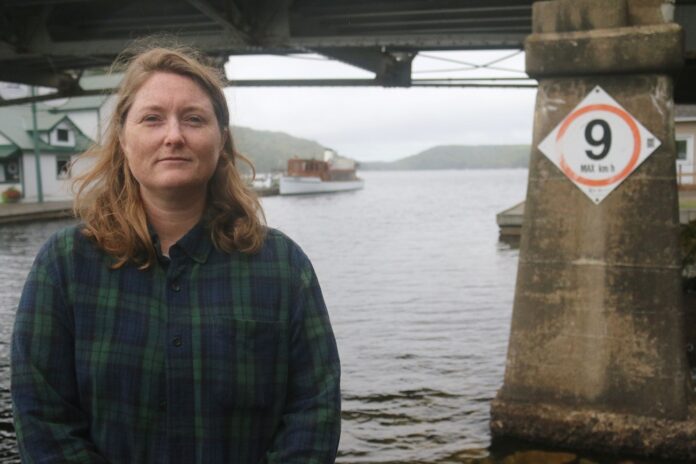Dorset resident Kate Trueland is raising the alarm after seeing a dramatic increase in the number of “dangerous” high wake events on narrow channels in the community this summer.
Trueland said she’s had to flag down boaters almost daily to teach them about local etiquette when approaching and navigating the stretch of water behind Trading Bay and Robinson’s General Store, which connects two portions of Lake of Bays.
“People from Dorset, or who have been cottaging in Dorset their whole lives understand there’s this unspoken rule about not creating wake in that channel. For the most part people know when they need to slow down and where they can start to accelerate their boat without causing issues, but this year has been bad. I’ve seen boaters creating huge wakes daily, and it’s worse on weekends,” Trueland said.
She noted wakes are a major safety concern in the area.
“If you’re standing on a dock that’s floating, you can get chucked right into the water if the wake is significant enough. It also impacts people on paddleboards. There are all kinds of risks – you could be hit by a boat and knocked out, you could face dismemberment, or even be killed. It’s a real problem,” she said.
There are environmental concerns, too. Trueland said she’s observed a snapping turtle that lives under a dock in the channel be displaced several times after high wakes have caused the dock to bounce out of the water. She noted wakes also impact fish, birds, otters, and beavers.
Wendy Gibson, president of the Lake of Bays Association, said high wakes have long been an issue in Dorset.
“The narrows on the way into Dorset and the river into Baysville are two areas we consistently hear about… it’s a tough situation, because there’s no law that regulates wake. A swimmer can generate wake, a canoe can generate wake – so it’s a difficult thing to combat,” Gibson said.
The Lake of Bays Association produced a boating brochure a couple of years ago outlining best practices and offering tips to boaters on how to safely navigate the water. That has helped bring down the number of complaints, Gibson said.
Trueland wants to see signage installed in the channel promoting it as a ‘no wake’ zone. She has filed a complaint with Transport Canada, requesting they take action. The federal agency has one sign in the area, promoting a maximum speed of nine kilometres per hour in the channel.
Sau Sau Liu, senior communications advisor with Transport Canada, said there are no provisions within the Canada Shipping Act that prohibits vessel wakes. There is, however, a provision within the federal agency’s Vessel Operation Restriction regulations that allows any level of government to ask the federal government to restrict or limit the use of vessels on any Canadian waterbody for safety or environmental reasons.
“These regulations can be an effective way to resolve a conflict related to the use of a waterway,” Liu told The Highlander.
Trueland said she’d like to see ‘no wake’ buoys like the ones installed on Kushog Lake by the Ox Narrows, strategically placed in areas around Dorset. She plans to lobby councils in Algonquin Highlands and Lake of Bays to help make that happen
Algonquin Highlands mayor Liz Danielsen said that, while wake issues are outside the municipality’s jurisdiction, she might consider an awareness campaign highlighting the damage wakes can have on shorelines, particularly around erosion, but noted any effort would need to be approved by council.
Trueland is hoping any measure to address wakes can be implemented, or installed, by next spring.
“I think education is the key component here. I don’t believe people are causing wakes intentionally or maliciously, but we need to do something to address the issue because it’s definitely getting out of hand,” she said.





